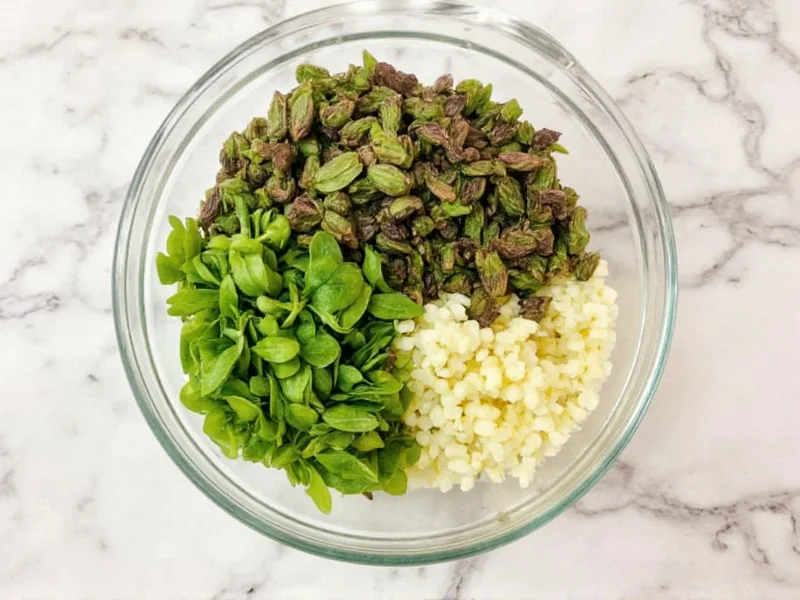2 tablespoons of fresh basil equals approximately 2/3 tablespoon (or 2 teaspoons) of dried basil. This 3:1 conversion ratio accounts for dried basil's concentrated flavor and reduced moisture content compared to fresh.
Converting fresh herbs to dried measurements is essential for recipe accuracy, especially when your kitchen pantry doesn't match what's called for in a recipe. Understanding the proper basil substitution ratio prevents flavor imbalances that can ruin your culinary creations.
The Science Behind Herb Conversion Ratios
When transforming fresh basil to dried measurements, the key factor is moisture content. Fresh basil contains approximately 90% water, while dried basil has most of this moisture removed through the drying process. This concentration effect means dried herbs deliver more intense flavor per volume.
The standard culinary conversion ratio of 3:1 (fresh to dried) exists because dried herbs are typically three times more potent than their fresh counterparts. This ratio applies specifically to leafy herbs like basil, oregano, and thyme, but varies for other herb types.
Step-by-Step Basil Conversion Guide
Converting 2 tablespoons fresh basil to dried follows these precise calculations:
| Measurement | Conversion Formula | Result |
|---|---|---|
| 2 tablespoons fresh basil | 2 ÷ 3 = 0.67 | 0.67 tablespoons dried basil |
| 0.67 tablespoons | 0.67 × 3 = 2.01 | 2.01 teaspoons dried basil |
| Practical measurement | N/A | 2 teaspoons dried basil |
This conversion works because 1 tablespoon equals 3 teaspoons. When converting fresh to dried herbs, always round to the nearest practical measurement for kitchen usability.
Complete Fresh-to-Dried Basil Conversion Chart
For quick reference, here's a comprehensive conversion chart for various basil measurements:
| Fresh Basil | Dried Basil Equivalent | Practical Measurement |
|---|---|---|
| 1 teaspoon | 1/3 teaspoon | Scant 1/3 teaspoon |
| 1 tablespoon | 1 teaspoon | 1 teaspoon |
| 2 tablespoons | 2/3 tablespoon | 2 teaspoons |
| 1/4 cup | 1.33 tablespoons | 1 tablespoon + 1 teaspoon |
| 1/2 cup | 2.67 tablespoons | 2 tablespoons + 2 teaspoons |
| 1 cup | 5.33 tablespoons | 1/3 cup + 1/2 tablespoon |
Flavor Considerations in Basil Substitution
While the 3:1 ratio provides a solid starting point for fresh basil to dried conversion, several factors influence the final flavor outcome:
- Herb quality - Freshness of dried basil significantly impacts potency. Older dried herbs lose flavor intensity over time.
- Drying method - Oven-dried, air-dried, and commercially dried basil have slightly different concentration levels.
- Recipe type - Long-simmered dishes may require slightly less dried basil than quick-cooking recipes.
- Personal preference - Some cooks prefer adjusting the ratio to 2.5:1 for basil specifically due to its delicate flavor profile.
When substituting dried for fresh basil in recipes, consider adding the dried herb earlier in the cooking process. Dried herbs need time to rehydrate and release their flavors, while fresh herbs are typically added toward the end of cooking to preserve their delicate aroma.
Storage Tips for Maximizing Dried Basil Quality
Proper storage directly affects dried basil's potency and your conversion accuracy:
- Store in airtight containers away from light, heat, and moisture
- Use within 6-12 months for optimal flavor (beyond this, you may need to increase quantities slightly)
- Check freshness by rubbing a small amount between your fingers - strong aroma indicates good potency
- Freeze dried basil in vacuum-sealed containers for extended shelf life
Remember that older dried herbs lose potency over time. If your dried basil has been stored for more than a year, you might need to increase the amount by 25-50% beyond the standard conversion ratio.
Common Basil Substitution Mistakes to Avoid
Many home cooks make these critical errors when converting fresh basil to dried measurements:
- Using equal measurements - Treating fresh and dried basil as interchangeable without conversion
- Overcompensating - Adding too much dried basil because the initial flavor seems weak
- Adding at the wrong time - Putting dried basil in at the end of cooking like fresh
- Ignoring recipe context - Not adjusting for dish type (sauces vs. salads vs. baked goods)
- Using poor quality dried herbs - Starting with stale or low-quality dried basil
For the most accurate results when substituting dried basil for fresh, always start with the standard 3:1 ratio, then adjust to taste after the dish has cooked sufficiently for flavors to meld.











 浙公网安备
33010002000092号
浙公网安备
33010002000092号 浙B2-20120091-4
浙B2-20120091-4